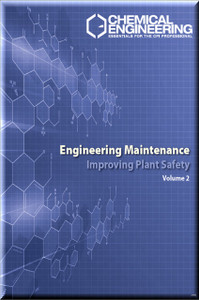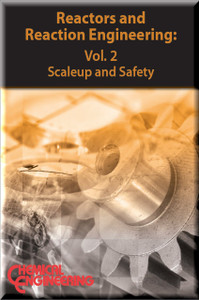Description
Volume 1 of this 2-part Chemical Engineering Guidebook contains practical, how-to articles originally published in Chemical Engineering magazine. The collection provides detailed discussions and recommendations for piping design, component selection, proper sizing, and operation. Emphasis is placed on safety, cost estimation, and maintaining the integrity of high-purity chemicals, hazardous substances, and general plant operations.
Articles cover piping-system operation, maintenance, and troubleshooting, as well as tips for leak prevention, corrosion control, vibration mitigation, and piping-related project management.
Features & Benefits
- Guidance on piping design, sizing, and component selection
- Strategies to improve safety, prevent leaks, and reduce vibration-induced failures
- Insights into high-purity and hazardous chemical piping systems
- Cost estimation methods and project-budget optimization
- Practical troubleshooting tips and field examples
- Compliance with evolving piping codes and standards
Audience
- Process engineers
- Plant operators
- Maintenance managers
- Safety engineers
- Technical managers in chemical and process industries
Articles Include
- Characterize Bulk Solids to Ensure Smooth Flow
- Designing Safer Process Plants
- Principles of P&ID Development
- Hot-oil Heat-Tracing Systems; Particle Impact Problems in Pneumatic Conveying
- Pipe Sizing
- Pipe Bends in Dilute-phase Pneumatic Conveying
- High Purity Chemicals: Processing Equipment Essentials
- Improve Your Contingency Estimates for More Realistic Project Budgets
- Common Mistakes When Conducting a HAZOP and How to Avoid Them
- Process Plant Layout — Becoming a Lost Art?
- Inspecting Underground Piping
- Flow Measurement in Large Lines, Ducts and Stacks
- Active Management of Pipespool Fabricators
- Updating the Rules For Pipe Sizing
- Pressurized Piping: Sampling Steam and Water
- Plot Plan Design: Process Requirements
- Process Hazards Analysis Methods
- New Piping Code for High-Purity Processes
- Rupture Discs: Effectively Minimize Leaks and Emissions
- Piping Design for Hazardous Fluid Service
- Reduce Gas Entrainment In Liquid Lines
- Combining the Use of Rupture Discs with Relief Valves
- Modern Rupture Discs Support Increased Plant Capacity
- Field Troubleshooting 101 and How to Get the Job Done
- Short-Cut Piping Costs
- A Method for Quantifying Pipe Vibrations
- Piping-System Leak Detection and Monitoring for the CPI
- Insulating Heat-Transfer-Fluid Piping
- Integrated Risk-Management Matrices
- De-emphasize Capital Costs For Pipe Size Selection
- Piping Design for Potentially Lethal Chemicals
- Critical Connections Demand Certainty
- Considering Fugitive Emissions During the Conceptual Design Stage
- Forces Acting on a Gasket
- Pneumatic Conveying: Optimal System Design, Operation and Control
- Pipe Insulation: Finding the Optimal Thickness
- Piping Codes: What the CPI Engineer Should Know
- An Overview of Vacuum System Design
- Spill Containment: An Often-Overlooked Hazard in Research
Details
Type: PDF
Pages: 227
FOR YOUR EYES ONLY: Please do not forward the PDF file. It is against the law to copy, fax, or electronically transmit the guidebook without permission.






